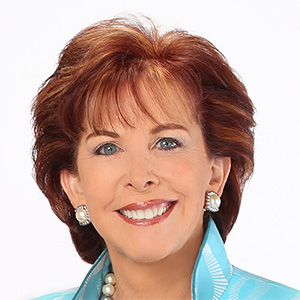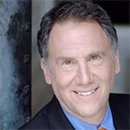Terry Savage: Fasten your seatbelts!
In recent weeks you’ve been on a wild and bumpy ride in the stock market. And it’s not over yet. The first shock of the breadth and depth of the tariff announcement sank equities over a number of days into territory approaching a bear market. Then the market staged a huge rally on the announcement that most tariffs were being delayed, in hopes of deals that will restore balance and mitigate the impact on the economy.
But damage has been done. No matter what trade deals are done — and no matter whether China comes to the table — the impact will have long-lasting consequences.
Trade patterns around the world have been changed, and you can be sure that from Europe to South America, new deals are being struck — deals that leave America on the fringe.
Major American companies will take a while to reallocate capital to manufacturing in the United States, assuming they can get raw materials and component parts at a reasonable cost. And assuming they can find labor in the U.S. to build their products at a reasonable cost.
Some small businesses will simply go out of business, unable to absorb the higher costs that go into their products. Some employers will cut jobs, as consumer spending slows and reallocates priorities.
The stock market reacts instantly. The economy will take longer to assess the impact — even if some tariffs are permanently rescinded. That’s why it’s difficult to predict the effect on corporate sales and profits — the two things the market looks at to evaluate stock prices.
The stock market is always right — a lesson taught to me years ago by a wise old trader. And the corollary to that statement is that it’s unwise (unless you’re a full-time trader by profession) to try to “beat” the market.
Over the long run — the past 100 years — there has never been a 20-year period when you would have lost money in a diversified portfolio of large company American stocks with dividends reinvested, according to the Ibbotson market historians.
So your only question must be: How long is YOUR long run?
If you are under 45 and contributing regularly to your 401(k) or similar retirement plan at work, or in an IRA, then your time horizon should far exceed the 20-year historic “safe” period. You won’t retire for at least 20 years, and you’ll likely live another 20 years during your retirement.
In that case, you must keep investing into your plan — no matter how scary the stock market looks in any one month. Make it automatic and don’t disrupt the flow of money into the stock market. After all, your fixed $300 contribution buys more shares when prices are down!
If you’re closer to retirement, and the stock market gyrations are concerning, this is a good time to re-evaluate the investment choices inside your retirement plan — even while maintaining your exposure to the stock market.
Most 401(k) plans don’t have a money market mutual fund as an alternative, because these plans are designed to grow your money over the long run for retirement. But many do have a short-term bond fund, or perhaps a more conservative stock fund, such as an equity-income fund.
If you’ve defaulted to a “target date” retirement fund inside your plan, be sure to take a look at exactly how conservatively that fund is invested. As you are just a few years from retirement, it may have a greater allocation to the stock market than makes you comfortable. It’s easy to switch some of that money to the short-term bond fund.
Your entire investment perspective changes once you’re retired. Instead of benefiting from lower stock prices as you invest more money, you’re suddenly faced with the cold fact that this is all the money you’re ever going to have. Losing even a portion becomes extremely painful.
It’s your job (or that of your trusted fiduciary adviser) to figure out the balance between the growth that stocks have always provided over the long run and the peace of mind you need to not panic at exactly the wrong time.
There’s an old stock market saying: “Sell down to the sleeping point.” That point is different for everyone, based not only on how much money you have in your retirement investments, but on your own personal risk tolerance. And you never really find that point of “risk tolerance” until the downside stares you in the face.
You just had a closeup look at risk. Bear markets have taken the market down 50% twice during this century in 2000-03 and 2008-09. That’s not a forecast; that’s history. No one knows the ultimate impact of today’s global readjustment on the U.S. stock market.
But at this stage of your life, are you willing to risk it? That’s the question to ask. And that’s The Savage Truth.
========
(Terry Savage is a registered investment adviser and the author of four best-selling books, including “The Savage Truth on Money.” Terry responds to questions on her blog at TerrySavage.com.)
©2025 Terry Savage. Distributed by Tribune Content Agency, LLC.















Comments